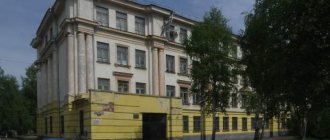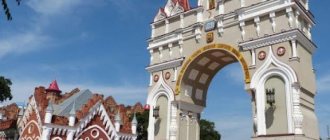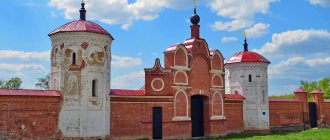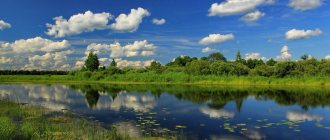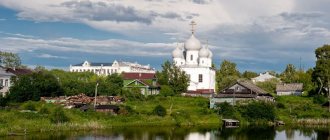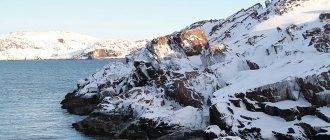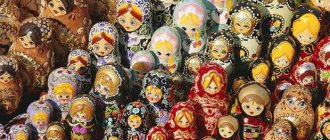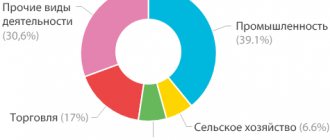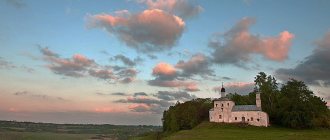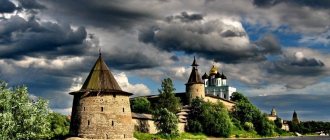The Astrakhan region is one of the southern regions of Russia. If you look at a map of the Astrakhan region from a satellite, its borders are easily determined. The territory of this region occupies about 49 thousand km2 and borders the world's largest lake - the Caspian Sea. The region is located between Kazakhstan, Kalmykia and the Volgograd region.
The main bodies of water in the region are the Caspian Sea and the Volga River. In addition to large bodies of water, there are about 900 salt and freshwater lakes in the region. The diverse flora and fauna made it possible to create 35 natural monuments and 5 national reserves in the region.
Geographically, the Astrakhan region includes 11 districts. The administrative center is the city of Astrakhan. More than 1 million people live in the Astrakhan region, almost 2/3 of the population are urban residents and only 1/3 live in villages and villages. To view the map of the Astrakhan region in the form of a diagram, you can use the mode switch in the upper right corner.
What holiday is it today?
January 22, 2022, Saturday
Today are holidays, events: Day of Unification of Ukraine Tomorrow: Premiere of the opera “Eugene Onegin” at the Bolshoi Theater
Today is the Orthodox holiday: Martyr Polyeuctus. St. Philip, Metropolitan of Moscow and All Russia, wonderworker... Tomorrow: St. Gregory, Bishop of Nyssa. Venerable Markian the presbyter. Venerable Dometian, Bishop of Melitino. St. Paul of Komel, wonderworker, student of St. Sergius of Radonezh. Saint Theophan, the Recluse of Vyshensky...
Today is a national holiday: St. Philip's Day... Tomorrow: Gregory - Summer Guide...
Cities
| № | Name | district / ZATO / city of regional significance[4] | population (persons) | founding/first mention | city status | coat of arms |
| 1 | Astrakhan | Astrakhan | ↘524 371[3] | 1558 | 1717 | |
| 2 | Akhtubinsk | Akhtubinsky district | ↘36 127[3] | 1793 | 1959 | |
| 3 | Znamensk | Znamensk, ZATO | ↘26 361[3] | 1948 | 1962 | |
| 4 | Kamyzyak | Kamyzyaksky district | ↗15 753[3] | 1560 | 1973 | |
| 5 | Narimanov | Narimanovsky district | ↘10 601[3] | 1963 | 1984 | |
| 6 | Kharabali | Kharabalinsky district | ↘17 338[3] | 1789 | 1974 |
Seasons
Seasons, four periods of the year (spring, summer, autumn and winter) characterized by certain average temperatures. The period during which the Sun passes through one of these sectors is called the season. Spring in the Northern Hemisphere and autumn in the Southern Hemisphere begin when the Sun passes through the initial circle of declination and its right ascension is 0° (vernal equinox). Summer in the Northern Hemisphere and winter in the Southern Hemisphere occur when the sun's right ascension is 90° (summer solstice). Autumn in the Northern Hemisphere and spring in the Southern Hemisphere begin when the sun's right ascension is 180° (autumnal equinox). The beginning of winter in the Northern Hemisphere and summer in the Southern Hemisphere is considered to be the winter solstice, when the direct ascension of the Sun is 270°... Next: Seasons. Russian folk calendar. Monthly words...
see also
- Astrakhan region
- Symbols and landmarks of the Astrakhan region
- Cities of Russia
| [ + ] Cities by regions of Russia | |
| Cities of the North-West (NWFD) | St. Petersburg (and its cities) • Leningrad region (historical Staraya Ladoga) • Arkhangelsk region • Vologda region • Kaliningrad region • Karelia • Komi • Murmansk region • Nenets Autonomous Okrug • Pskov region |
| Cities of the Volga region (Volga Federal District) | Bashkortostan • Volgograd region • Kalmykia • Kirov region • Mari El • Mordovia • Nizhny Novgorod region • Orenburg region • Penza region • Perm region • Samara region • Saratov region • Tatarstan • Udmurtia • Ulyanovsk region • Chuvashia |
| Cities of Southern Russia (SFD) | Sevastopol (including Inkerman) • Republic of Crimea • Adygea • Astrakhan region • Krasnodar region • Rostov region |
| Cities of the North Caucasus (NCFD) | Dagestan • Ingushetia • Kabardino-Balkaria • Karachay-Cherkessia • North Ossetia - Alania • Stavropol Territory • Chechen Republic |
| Cities of the Urals (Ural Federal District) | Kurgan region • Sverdlovsk region • Tyumen region • Khanty-Mansi Autonomous Okrug - Yugra • Chelyabinsk region • Yamalo-Nenets Autonomous Okrug |
| Cities of Siberia (Siberian Federal District) | Altai Republic • Altai Territory • Irkutsk Region • Kemerovo Region • Krasnoyarsk Region • Novgorod Region • Novosibirsk Region • Omsk Region • Tomsk Region • Tyva • Khakassia |
| Cities of the Far East (FEFD) | Amur Region • Buryatia • Jewish Autonomous Region • Trans-Baikal Territory • Kamchatka Territory • Magadan Region • Primorsky Territory • Sakha (Yakutia) • Sakhalin Region • Khabarovsk Territory • Chukotka Autonomous Region |
| see also | Cities of the DPR, LPR, Transnistria, South Ossetia • Regions of Russia • Cities of Russia |
Folk calendar about every day
Every day one season always replaces another and this determines a person’s way of life. In connection with this, a folk calendar was formed in which there were practically no nameless, unmarked days. Every day was special, had its own purpose. All this was determined by climate conditions and astrological phenomena.
A calendar is a system for counting periods of time. The first calendars arose a long time ago, in ancient times, because there was a need to measure time. The word calendar comes from the Latin words caleo - to proclaim and calendarium - debt book. This is due to the fact that in Ancient Rome the beginning of each month was especially proclaimed, and because it was customary to pay debts on the first day of the month. Different peoples counted time differently. Some calendars are based on the changing phases of the moon - lunar calendars; in others - the change of seasons - sunny; in others, the length of the year was coordinated with the change of seasons, and the counting of months was associated with the phases of the Moon. Such calendars are called lunisolar.
In Rus', the calendar was called a monthly calendar. Every day, the month book covered the entire year of peasant life, “describing” day by day, month after month, where each day had its own holidays or weekdays, customs and superstitions, traditions and rituals, natural signs and phenomena. The cyclical nature of the calendar is reminiscent of human life, where spring is youth, summer is heyday, autumn is the time of harvesting fruits (it’s good if there are some, otherwise you can live your life without collecting fruits), winter is the time of wisdom and peace. This cyclicality and rhythm determined the way of life of the farmer. The folk calendar was an agricultural calendar, which was reflected in the names of the months, folk signs, rituals and customs. Even the determination of the timing and duration of the seasons is associated with real climatic conditions. Hence the discrepancy between the names of the months in different areas... Next: Folk calendar...
Economy and industry of the Astrakhan region
The region has a well-developed industry. The main ones are shipbuilding, mechanical engineering, food and energy sectors. In addition, the Astrakhan region is a region where oil and gas production is carried out.
Thanks to the presence of shipping, railway, and road routes, the region's economy is developing successfully. Manufactured products are sent to all regions of the country and beyond. The “web” of economically significant transport routes of the Astrakhan region can be seen in sufficient detail on a satellite map. The length of the railway lines is 849 km, and the shipping lines are 1440 km.
Akhtyubinsky district of the Astrakhan region is one of the largest military-defense centers in the country. There is a military training ground here, as well as military industry enterprises.
Yandex maps of the Astrakhan region will help you get acquainted in absentia with one of the developed industrial, economic, tourist and cultural centers of Russia. They make it possible to estimate the size of the region, its transport routes, and the location of cities and villages. In addition, such an assistant will be indispensable when traveling around the country, because the map will always help you quickly determine locations and set the required route.
Fishing calendar for every day
The fishing calendar should not be taken as an absolutely indisputable truth. Fish biting is greatly influenced by a whole range of natural factors, as well as the influence on the nature of man himself. You must not forget that the fish’s bite depends and is determined not only by the calendar dates and biological cycles of their life, reflected in the calendar, but also, no less, by the state of their habitat; the bite also depends on weather conditions: air and water temperatures, cloudiness, wind direction and strength, etc... Next: Fishing calendar...
Urban settlements
- Liman
Population 8,266 (2020).
- Verkhniy Baskunchak
Population 7,493 (2020).
- Red Barricades
Population 6,397 (2020).
- Ilyinka
Population 5,076 people (2020).
- Nizhny Baskunchak
Population 2,401 (2020).
- Volga-Caspian
Population 2,242 (2020).
- Kirovsky
Population 2064 people (2020).
Orthodox calendar about every day
Orthodox calendar: Orthodox, Church and Christian holidays.
The church year is an alternation of weekdays and holidays. On weekdays, a person is called to work “by the sweat of his brow to earn his bread.” Holidays are given in order to feel liberation, to rise above the bustle and routine of the world, to feel involved in the highest of worlds, “where there are no illnesses, sorrows and sighs, but endless life.” Since ancient times, holiday cycles have been associated with the seasons. The pagans associated them with the worship of the forces of nature, the cult of which in the Old Testament was replaced by gratitude to the Creator for the universe. And although the connection between holidays and the seasons has not completely lost its power, since God is present in everything, in the plant and animal world, in human works, it nevertheless faded into the background, giving way to a spiritual foundation built on the Sacred Scriptures. The history of Orthodox holidays dates back to the times of the Old Testament. Each of the Orthodox holidays is dedicated to the remembrance of the most important events in the life of Jesus Christ and the Mother of God, as well as the memory of saints... Next: Orthodox calendar...
General information
According to the 2010 census, the population of the Astrakhan region was 1,010,700 people. The urban population is 674,000 people, and the rural population is 336,700 people. The gender composition of the region is as follows: 53% are women, 47% are men. There are 1,130 women per 1,000 men. The average population density of the region is 19 people per 1 sq. km. The most densely populated territory of the Astrakhan region is the Volga region (47 people per 1 sq. km); increased population density in the Ikryaninsky district (25 people per 1 sq. km) along the main road in the Volga delta. The Enotaevsky, Chernoyarsky and Akhtubinsky districts are the most sparsely populated. The region's population is relatively young (this is due to its national composition and large migration influx); only 19% of the population is over working age. The migration inflow into the region is positive (3% in 2005). People in search of stability in the economy, social and political life move to the Astrakhan region mainly from Central Asia and Transcaucasia.
Ratio of men and women (Rosstat data)
Russian folk calendar for every day
The word “sign” comes from the word “notice”, i.e. observe. As a result of observing what happens around a person every day, he accumulates life experience. This knowledge was passed down from generation to generation, carefully preserved and people trusted it as a sacred book. Many signs have come to us from the depths of centuries without losing their knowledge. Each of us is free to choose: to dismiss all this as an absurd superstition or to take a closer look at the signs and take the centuries-old experience of generations more seriously. Most of us, when taking exams, ask them to scold them, boasting about some kind of good fortune or luck, spit so as not to jinx them or knock on wood, take a detour if a black cat crossed the road, are afraid of the number 13 and much more. And who among us does not have lucky things, numbers? Who has never resorted to the help of fate at least once in their life, who has not believed in secrets? It’s as if everything connected with signs is hidden somewhere deep in our subconscious. Often we remember them mechanically, unconsciously, or just as a joke. But, undoubtedly, the signs contain a lot of accurate knowledge and practical wisdom of our ancestors. They cover all the characteristic, often difficult to perceive, natural phenomena. Signs have preserved a lot of what was in old folk holidays and customs; they help predict the weather, grow crops... Next: Folk signs...
Farm
A. o. is part of the Volga Economics. the district is an industrial region; industrial volume The cost of products is 5.8 times higher than the volume of agricultural production. products. In the country's economy, A. o. stands out for the production of gas (1.9% of the Russian Federation in 2003), gas condensate (29%), table salt (52%), sulfur production (60%), metal-cutting machines (4.6%) and floating drilling rigs for great sea depths; production of wool (4.5%), vegetables (1.7%), catch of fish and seafood (approx. 0.5%). On the territory of A. o. The Kapustin Yar test site (Znamensk), Caspian military are located. flotilla (relocated to Astrakhan from Baku in 1992). In the structure of GRP (%, 2002) the share of industry is 25.5, construction – 13.8, trade and commercial. activities for the sale of goods and services – 9.6, transport – 9.1, p. farms – 5.5, communications – 1.6. The ratio of enterprises by type of ownership (by number of organizations;%, 2003): private - 71.5, state. and municipal – 14.8, societies. and religious organizations (associations) – 7.4, other forms of ownership – 6.4.
Economically active us. 521 thousand people, 84% are employed in the economy. Sectoral structure of employment (%): p. farming 15.3, industry 14.9, trade and society. food 13.9, education 10.2, healthcare 8.9, transport 8.1, construction 8.0, housing and communal services 5.8, etc. The unemployment rate is 10.1%. Cash income per capita is 4.5 thousand rubles. per month (72% of the average for the Russian Federation, 2004); OK. 23% of us. has income below the subsistence level.
Industry. Industrial volume products in 2004 amounted to 30,465 million rubles. Industry structure of industry production (%, 2003): fuel industry 58.9, mechanical engineering and metalworking 13.3, electric power 10.8, food industry 9.2, construction industry. materials 3.0, chemical and petrochemical 2.1.
Electric power industry is presented in Chap. arr. enterprise "Astrakhanenergo" (share in electricity generation 85–90%). The energy system companies provide approx. 90% of the region's total electricity demand.
"Astrakhan Gas Complex". Installation of equipment. RIA News"
Extraction of gas (Astrakhan gas condensate field, etc.), oil (fields of the Promyslovsky district), table salt (Lake Baskunchak), gypsum, brick and expanded clay, glass and construction. sands, low-mineralized medicinal table waters. The largest enterprises in the fuel industry are Astrakhangazprom and Lukoil-Astrakhanmorneft. The Astrakhan Gas Complex operates on the basis of the Astrakhan gas condensate field and produces sulfur. The second important branch of specialization of the region's industry is mechanical engineering, which is represented by Ch. arr. shipbuilding (for the oil and gas and fishing industries) and ship repair. They produce dry-cargo, oil tankers (deadweight up to 6 thousand tons), auxiliary, pipe-laying, passenger, fishing vessels, floating drilling rigs of the “Caspian” and “Shelf” types, etc. The largest enterprises are the ship repair and shipbuilding plant named after. III International (Astrakhan), shipyards: named after. Lenin (Astrakhan), “Astrakhan Shipbuilder”, “Astrakhan Shipyard”, “Red Barricades” (Krasnye Barrikady village, Ikryaninsky district). The production of metal-cutting machines has also been developed (Astrakhan Machine Tool Plant), agricultural production. equipment, forging and pressing equipment (Astrakhan Machine-Building Plant); The Astrakhan Refrigeration Equipment Plant operates, etc. In the food industry, fishing and fish processing is the leader (it accounts for up to 35% of the industry's production volume). Fish resources are represented by valuable species of sturgeon (sturgeon, beluga, sterlet) and small fish; artificial breeding of sturgeon fish is carried out. Leading companies in the extraction and processing of fish are the Sea Fishing Base, Astrakhan Fish Factory, Russian Caviar (Astrakhan). The salt industry is represented by the Bassol enterprise (village Nizhny Baskunchak, Akhtubinsky district). Flour-grinding, butter-cheese-making and dairy, meat-processing, and fruit-and-vegetable sub-sectors are also developed; Astrakhan distillery and distillery operate. Builds industrial enterprises. materials (Mineral-Knauf in Akhtubinsky district), glass (Astrakhansteklo), pulp and paper (Astrakhanbumprom), chemical. and petrochemical (“Astrakhan fiberglass”, “Astrakhim”, etc.), pharmaceutical, printing. and other industries (Table 1). Basic industrial volume products are produced in the Krasnoyarsk region (up to 60% of the A. region), Astrakhan (approx. 30%), Akhtubinsky and Ikryaninsky districts.
"Astrakhan Fish Processing Plant" Weighing fish before cutting. RIA News"
Exports are dominated by oil and oil products, ships, equipment for offshore oil production, fish and fish products; in imports - equipment and machinery, ferrous metal products, etc.
Agriculture. Cost of gross output c. farms A. o. amounted to 5209.3 million rubles. in 2004. In value terms, livestock products predominate (52%). Agricultural area land 22.7 thousand km2 (2003; approx. 1.2% of the area of the Russian Federation), of which 77% is pasture, 10.6% is arable land.
A. o. - one of the largest regions in the Russian Federation for the commercial production of vegetables, melons and rice (Table 2), the development of which is facilitated by unique agroclimatic conditions. resources of the Volga delta and the Volga-Akhtuba floodplain (fertile alluvial soils, hot climate, abundance of water) and irrigated agriculture. The region is a major producer of vegetables in the Russian Federation. In the volume of vegetable crop production, more than 90% is made up of tomatoes (about 1/4 of the Russian harvest). Cucumbers, cabbage, eggplants, peppers, carrots, onions, etc. are also grown. Astrakhan watermelons with a high sugar content are widely known. From the end 1990s They cultivate cotton, tobacco, and mustard.
Livestock farming is represented by meat and wool sheep breeding, meat and dairy cattle breeding; Semi-desert areas are used for pastures. A. o. occupies a leading position in the Russian Federation in terms of sheep population and wool production (Tables 3, 4). Poultry farming, herd horse breeding, and camel breeding are developed.
Most of the agricultural land (approx. 71% in 2003) refers to agricultural lands. organizations where approx. 83% grains, 20% vegetables; in peasant (farm) households - approx. 18% grains, 26.1% vegetables. 54% of vegetables are produced on household farms, approx. 80% potatoes, 81% milk, 76.3% livestock and poultry for slaughter.
Table 1. Production of the most important types of industrial products
| Types of products | 1985 | 1990 | 1995 | 2000 | 2003 |
| Electricity, billion kW$\cdot$h | 0,7 | 2,1 | 3,1 | 3,4 | 3,1 |
| Oil, including gas condensate, million tons | 0,1 | 0,8 | 1,4 | 3,4 | 4,0 |
| Natural gas, billion m3 | 0,1 | 2,1 | 4,1 | 9,8 | 11,4 |
| Metal-cutting machines, pcs. | 2302 | 2032 | 434 | 243 | 264 |
| Prefabricated reinforced concrete structures and products, thousand m3 | 455 | 489 | 141 | 126 | 144,8 |
| Forging and pressing machines, pcs. | 4647 | 3684 | 42 | 1 | 157 |
| Canned fish and seafood, million conventional cans | 142 | 185 | 56,3 | 106 | 33,1 |
| Fish catch and production of other seafood, thousand tons | 175 | 183 | 94,3 | 160 | 54,1 |
Table 2. Production of main agricultural crops, thousand tons
| Agricultural crops | 1985 | 1990 | 1995 | 2000 | 2003 |
| Corn | 204,1 | 260,5 | 79,6 | 59,2 | 31,9* |
| Potato | 25,7 | 19,1 | 61,8 | 74,5 | 95,6 |
| Vegetables | 506,5 | 350,1 | 165,7 | 190,5 | 249,6 |
* 2004.
Table 3. Livestock, thousand heads
| Livestock | 1985 | 1990 | 1995 | 2000 | 2004 |
| Cattle | 342,9 | 373,1 | 227,2 | 153,5 | 178,5 |
| Pigs | 49,0 | 70,6 | 37,0 | 19,4 | 22,2 |
| Sheep and goats | — | 1428,3 | 737,0 | 496,8 | 798,2* |
* 2003.
Table 4. Livestock products
| Types of products | 1985 | 1990 | 1995 | 2000 | 2004 |
| Livestock and poultry for slaughter, thousand tons | 46,0 | 50,3 | 37,8 | 18,3 | 34,7 |
| Milk, thousand tons | 177,1 | 210,3 | 142,1 | 115,1 | 135,4 |
| Eggs, million pieces | — | 204,9 | 185,8 | 179,9 | 213,5 |
| Wool, t | — | 7581 | 3805 | 1558 | 2028 |
Port. Astrakhan. Photo by P. S. Pavlinov
Transport. Transport axis A. O. - R. Volga. Ch. river ports - Astrakhan, Akhtubinsk. The total length of navigable river routes is 1412 km. In 1998, the sea trade port of Olya was opened (in the Limansky district, 100 km from Astrakhan), specializing in the export and import of dry cargo from Russia, Kazakhstan, Turkmenistan, and Iran. The length of the railways is 555 km (2003). Ch. railway highway Astrakhan - Volgograd - Saratov - Ryazan - Moscow - St. Petersburg. The length of paved roads is 2.68 thousand km (2003). Highways Astrakhan - Moscow, Astrakhan - Elista, Astrakhan - Makhachkala, Astrakhan - Krasny Yar - Atyrau. Intl. airport in Astrakhan. The main oil pipeline Tengiz – Atyrau – Astrakhan – Novorossiysk runs through the region.
Holiday calendar, dates and events of the year
All state and professional holidays in Russia, including significant World and International holidays, and other equally interesting holidays and events about every day.
The holiday has always kept pace with the history of mankind. Social time can be divided into three types: everyday life (weekdays), weekends and holidays. Everyday life is a series of practices repeated day after day and every day (work). Weekends are regular breaks from the rush of everyday life. It is believed that on weekends a person should restore his strength after working days. Day off, non-working day. A holiday is a day of celebration established in honor or in memory of someone or something. A day or series of days celebrated by the church in memory of a religious event or saint... Next: Calendar...
Prayer book, Orthodox prayers for every day
Prayer is the most powerful means for healing all illnesses - both physical and mental. Prayers can be laudatory or grateful, petitionary and repentant. If we have offended God, sinned, we must ask Him for forgiveness, that is, repent. Such prayers are called repentant prayers. If everything is fine with us, if we and our loved ones are healthy and prosperous, if we have a place to live, something to wear, something to eat, we must glorify and thank God for this. Such prayers are called praise or thanksgiving. If some misfortune, illness, trouble or need happens, you need to ask God for help. Such prayers are called petitionary... Next: Orthodox prayers...
Zodiac, astrological, eastern calendar. Zodiac signs
In ancient times, to establish the calendar, priests used knowledge of the positions of all the planets. Before the reform of Peter 1, the New Year was celebrated on the Day of the Autumn Equinox. On this day, according to ancient legend, the most peaceful treaty was concluded between the Great Race (ancient Slavs) and the Great Dragon (ancient Chinese) and it was approximately 7518 years ago... For the ancient Slavs, the calendar month corresponded to the lunar cycle from new moon to new moon, taking into account such Thus, the relationship of the entire annual cycle with astronomical and natural phenomena. There was no coherent calendar system. The main natural phenomena are still considered to this day to be the days of the solar equinox and solstice - the Slavic holidays Maslenitsa, Kupala, Ovsen and Kolyada. But during the time of Peter 1, all ancient Slavic calendars were abolished and a new Western European calendar from the Nativity of Christ (Julian calendar) was introduced, while the beginning of the calendar was moved to January 1. The Julian calendar (old style) did not take leap days into account and accumulated one extra day every 128 years. After the October Revolution in 1918, the Gregorian calendar (new style) was introduced in Russia, according to which an amendment of 13 days was introduced. The calendar of the ancient Slavs was based on two planets: the Sun and the Moon. And now they don’t use anything at all. The calendar has become static. There is no such thing as the calendar, it turns out, resting on some planet. Nobody even knows about it. There are just some standard numbers, there are months and holidays. The calendar is based on the Sun and Moon. Why is this so? Because these two luminaries influence the Earth. The Earth revolves around the Sun, and the Moon revolves around the Earth. And these two luminaries create the atmosphere on the planet. From here the calendar is built... Next: Astrological calendar...
Population
B. h. population of A. o. are Russians (70%, 2002 census), Kazakhs (14.2%) and Tatars (7%, including Astrakhan Tatars 0.2%). Other groups include Ukrainians (1.3%), Chechens (1%), Azerbaijanis (0.8%), Kalmyks (0.7%), Armenians (0.6%), Nogais (0.5%), Avars (0.4%), Lezgins (0.4%), Dargins (0.4%). Since 1997 it has been characterized by natural population decline: mortality (15 per 1000 inhabitants, 2004) exceeds the birth rate (12.4 per 1000 inhabitants); infant mortality rate 12.6 per 1000 live births (2003). The share of women is 53%. The share of the population under working age (up to 16 years) is 19.1%, over working age 18.5%. In 2003, life expectancy was 65.4 years (men - 59.2, women - 72.2). Since the 1990s The region was characterized by a steady migration influx of population, mainly from former countries USSR, which practically ceased in 2003 (migration growth rate -1 per 10 thousand inhabitants). Wed. density of us. 22.6 people/km2. The Volga delta is the most densely populated. Gor. us. 67.0% (2005; 68.0% in 1989, 52% in 1959). St. 1/2 of us. region and approx. 3/4 of the townspeople live in Astrakhan (501.3 thousand people, 2005). Dr. significant cities (2005, thousand people): Akhtubinsk (44.2), Znamensk (32.1).
Dream books online, interpretation of dreams
A dream book is nothing more than an interpreter of dreams and dreams, a translator of dreams. Since ancient times, people have been using dream books; dreams have always been given great importance, and people have often noticed the prophetic properties of some dreams. The dream book can become your faithful assistant every day and throughout your life, thanks to the dream interpreter you can always make the right decisions, the dream book will help you resist temptations in time, and will warn you against wrong steps and frivolous actions. Further…
